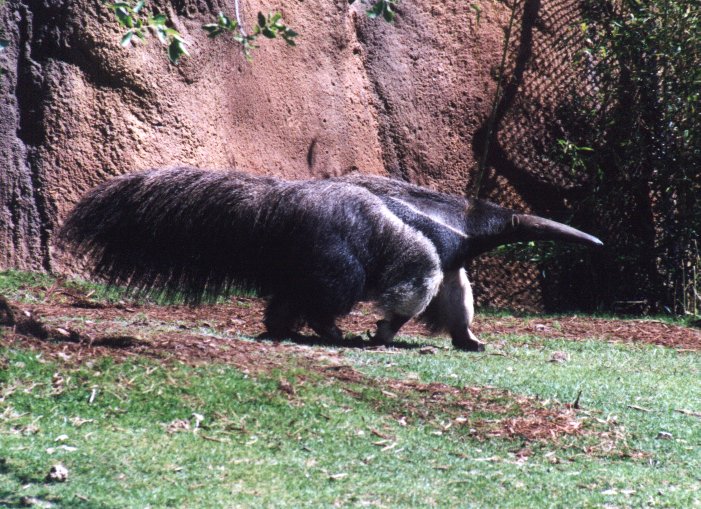
Myrmecophaga tridactyla
Giant anteaters live in tropical forests and grassy plains from Panama to Argentina. They feed mainly on ants and termites, being capable of sometimes consuming up to 30,000 insects in a single day. They open up the ant-nest with their claws and use their long sticky tongue to fish ants out of the nest. They are careful not to totally destroy the nest they feed on. They will rather rip up a small part of an ant hill, and the remaining ants/termites will fix that area very quickly. In this way there will be more food for the anteater in the future. During much of its first year of life, a young anteater will ride on its mother's back. It is generally acknowledged that giant anteaters have a poor sense of sight but a keen sense of smell. In fact, their sense of smell is regarded to be some 40 times stronger than that of humans. The name of the species, tridactyla, comes from "tri" and "dactylos", which is Greek for "three fingers". However, giant anteaters actually have five toes on each paw (the fifth is a "vestigial" one). The name probably came about because only three of the front toes have prominent claws and can be easily seen. Giant anteaters rarely make sounds. When they do it is mostly when they are young; the sound is a high-pitched, shrilly grunt noise. A baby that has fallen off his mother's back will grunt to its mother either to remind her that it has fallen off or to simply instruct her where it is or to get her attention.
The above picture was taken in the zoo of St. Louis, Missouri, in May, 2002.
Family Myrmecophagidae
Order Xenarthra
Subclass Eutheria
Class Mammalia
Subphylum Vertebrata
Phylum Chordata
Kingdom Animalia
Life on Earth
Index